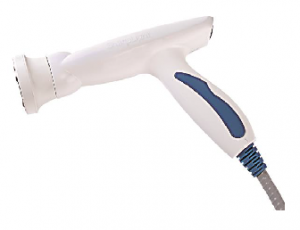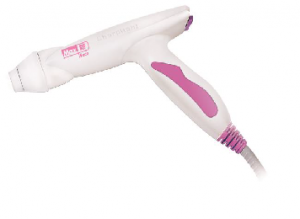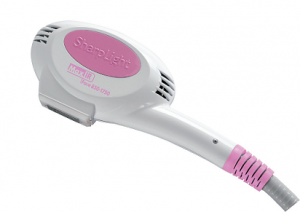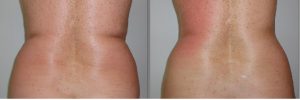CONTACT US

Dual modality body shaping study with RF and IR technologies utilizing SharpLight's FormaxPlus Platform
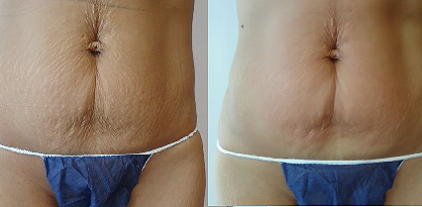
Irina Yelenbaugen, M.D
Iryna Slavna, Clinic Director
Lolita Marudenko, Study Coordinator
Skin Boutique, Toronto ON
Abstract
Background: Dermal heating devices based on Infrared and Radiofrequency technologies have been popular for several years as a non-invasive, aesthetic treatment modality to improve the appearance of cellulite, to tighten lax skin and reduce abdominal and thighs circumference.
Objective: To demonstrate the safety and effectiveness of two different modalities in the same sessions: Improvement of skin toning with SharpLight's unique Infrared MaxIR 850-1750, Thermal and Fractional mode, and targeting fat and cellulite cells with Max Radiofrequency with 4 interchangeable heads.
Methods: Twenty female patients between the ages of 20-50 with varying degrees of cellulite and skin laxity were selected. Results: 75% of patients were very satisfied or satisfied with the results of their treatments. No major side effects were recorded.
Conclusion: This clinical study demonstrates high patient satisfaction of dual modality body shaping protocol with SharpLight's platform. It demonstrates great improvement in skin texture and laxity, cellulite and circumferential reduction of various body areas.
Introduction
RF: Radiofrequency dermal heating devices have been considered the most effective, non-invasive, aesthetic treatment modality to improve the appearance of cellulite, facial wrinkles, to tighten lax skin and reduce abdominal and thighs circumference. Radiofrequency devices heat under the skin by passing rapidly oscillating electrical currents through the tissue. The RF heat occurs irrespective of chromophore and skin type, and is not dependent on selective photothermolysis. In monopolar devices, current is passed between a small electrode in contact with the treatment area and a large return electrode pad. In bipolar devices, the current is passed between two electrodes in contact with the treatment area. With such devices, as RF power increases, the current penetrates deeper into the tissue; hence, the penetration depth and the heating level can be controlled. The depth of a penetration in bipolar RF systems equals to the half distance between the two electrodes. The advantage of using such systems is the ability to confine RF flow to a certain area inside the tissue. By proper adjustment both the dermis and subcutaneous layers can be heated to therapeutic levels while preserving the epidermis. The typical depth of penetration when using bipolar RF systems is 4-6 mm. When adding more electrodes, deeper penetration can be achieved.
RF treatments can be performed with absolutely no downtime and can often result in dramatic changes in body contours as well as face skin texture. Face, neck, arms, abdomen, buttocks and thighs are all amenable to RF treatments.
Treatments have been documented to be extremely safe with only minimal and transient side effects such as erythema and slight edema. To maintain this level of safety it was found that anaesthesia should be avoided to allow patient feedback regarding pain and heat sensation, which is extremely bearable and even pleasant.
Heat produced by RF in the dermis and subcutaneous layer causes immediate tightening of collagen and induces new collagen production. Increase in local blood circulation promotes fibrous tissue breakdown, drainage of fatty deposits through the lymphatic system and disintegration of fat/cellulite cells. Adipose tissues "mobilize" or release stored fat to make it available as energy for metabolic activities by physiological mechanism called lipolysis. Like any chemical reaction all enzyme-mediated biological reaction rates, including those of lipolysis, are temperature sensitive. Increasing the temperature of the fat cells by 10°C increases the lipolytic process rate by factor of 2. Increasing the fat cells temperature, above 43° C, results in protein denaturation and irreversible damage. All these mechanisms contribute to the skin tightening effects, skin texture improvement, reduction of the appearance of cellulite as well as circumference reduction.
Patients usually feel the skin tightening effect following each treatment; however, the full result becomes evident following the end of the treatment sessions (usually 6-10) due to the buildup of new collagen in the area. Results are expected to last 1-2 years and maintenance treatments can be continued on a regular basis or repeated as desired by the patient.
IR: A non-coherent, selectively filtered infrared device emitting infrared light in multi-second cycles has been developed with the intention to provide dermal heating.
Water, as the target chromospheres, allows uniform heating of the targeted skin tissue volume. A tailored wavelength spectrum from 850 to 1750 nm on one hand sufficiently absorbed by intracellular and extracellular water yet allows a penetration depth of 3-4 mm into the skin which is ideal for targeting the reticular dermis.
A multi second exposure is used with sufficient energy to create the desired combination of time and temperature for collagen contraction. The epidermis is protected through contact cooling. This allows for heating of the treated tissue without epidermal damage.
Collagen is a polymer that exists as a triple helix with chains held together by hydrogen bonds. These molecules are aggregated and organized as fibrils with tensile properties attributable to intermolecular cross-links. When collagen is denatured by heat, the intra molecular hydrogen bonds rupture and the triple helices "unwind to produce a gel of random-coil molecules." Tissue tension in human skin increases because, although the fibers become shorter, the heat-stable cross-links between molecules are maintained, thus increasing the rubber elastic properties of the collagen polymer. The heat-modified tissues then undergo remodelling associated with fibroplasias and new collagen deposition. When denaturation is complete, further increases in temperature result in additional fiber shortening, most likely because of peptide bond hydrolysis.
The mechanism of collagen shrinkage has been described in detail. The temperature at which collagen shrinking occurs is often quoted as 65°C. According to this equation, shrinkage of collagen depends on time, as well as temperature, and collagen contraction occurs at a variety of time-temperature combinations, rather than that at a specific temperature. That said, it has been suggested that for millisecond exposures, collagen shrinkage will occur only at temperatures exceeding 85°C, whereas for exposures of several seconds, shrinkage will occur at 60° to 65°C. Collagen contraction begins to occur at approximately 55°C. This is caused by the spread of heat to the deeper reticular dermis.
In contrast to radiofrequency, the infrared spectrum is both predictable and easily understood, based on the known coefficients to the target chromospheres of water resulting in heating at depth from 1-3 mm. The epidermal temperature is kept as a safe level of below 40°C by an integrated thermoelectrically cooled sapphire window, which also assists in maintaining patient comfort during the treatment.
This unique IR spectrum creates a "dual clinical effect" of immediate skin tightening together with long term new dermal collagen formation. The primary function of IR technology is tightening of skin laxity in parts of the body such as face, neck, arms, abdomen, buttocks, thighs, etc. Pain levels are reported to be well tolerated.
Patients Materials and Methods
Adult females between the ages of 20-50 with localize fat and cellulite, stretch marks and skin laxity in the arms, abdomen, hips, buttocks and thighs, were treated with two different modalities in the same sessions: Infrared MaxIRs 850-1750, Thermal and Fractional mode, and Max RF with 4 interchangeable heads according to treatment parameters. Glycerine was applied to treatment area.
The study included twelve treatment sessions, once weekly for three monthsA? and three follow-up maintenance visits at 4th, 5th and 6th month after the last treatment session.
Before and after each treatment and each follow-up visit, study's efficacy endpoint was considered by comparative photography which was assessed and graded by two expert physicians in aesthetic medicine. Expert assessment was conducted based on a scale from 0-5 where 0 represents perfect/flawless skin, with no signs of fat or cellulite, and 5 represents excessive fat storage, cellulite, or lax skin. Patient self-assessment of satisfaction was done using a 1-10 scale relative to base-line. During the study and upon completion of the study, each patient provided a feedback with the respect to their overall satisfaction.
Results:
Overall results were scored by patients according to the following grading scale: 1 stands for very satisfied; 2 stands for satisfied; 3 for patients that noticed no results; and 4 for not satisfied.
4 patients (20%) were very satisfied; 11 (55%) were satisfied; 3 (15%) didn't see improvement; 2 (10%) were not satisfied. 13 (65%) of patients have completed required number of sessions (according to treatment protocol), 3 (15%) patients did not complete the number of recommended treatments, and 4 (20%) of the subjects did not complete the follow up treatments.
Anatomical sites included: abdomen, hips, underarms, thighs and arms.
All patients were briefed on the procedure, including potential complications and realistic expectations, and then signed an Informed Consent Form.
Areas of the treatment were photographed each session before and after treatment.
No additional external skin cooling techniques were used. Subjective and practitioner's satisfaction grades were summarized in the treatment record and at the end of every file respectively.
Only 4 cases of mild adverse events were recorded: moderate erythema which lasted for 2 hours and then spontaneously disappeared without any future complications.
All patients were able to bear the treatment without excessive sensation of pain. No significant discomfort was recorded.
The results and effectiveness of dual modality protocol of 5 subjects are recorded in the table below:
| Random. number | Gender Age | Treatment Area | Pre treatment measurements (cm.) | # of Treatments | Post treatment measurements (cm.) | Type of treatment RF level 1 -5: frequency 1 MHz, 30 -60 min per session | Type of treatment IR +RF | Patient satisfaction: 1- very satisfied; 2-satisfied; 3- not satisfied | Temperature range. | Side effects:Edema (swelling), Erythema (redness), |
| (003) | Female 33 | Abdomen | 89cm | 10 | 81cm | Level 5 30' + 30' EI from 117% up to 174% RE from 17849 J up to 102415 J | pre cooling off 4 sec: pulse on 5 sec., From 30J up to 40J with 2 passes | 1 | T=41,7"-44,7" C | erythema after treatment for 30' min |
| (016) | Female 41 | Thighs | Left 59.5cm Right 58cm | 9 | Left 52cm Right 52cm | Level 5 30' + 30' EI from 74% up to 186 % RE from 23220 J up to 94805 J | pre cooling off 5 sec: pulse on 4 sec., From 30J up to 45J with 2 passes | 2 | T=40,2"-44,1"C | No erythema after treatment |
| (014) | Female 38 | Hips | 113cm | 4 | 104cm | Level 5 30' + 30' EI from 99% up to 162% RE from 48366 J up to 130070 J | pre cooling off 3 sec: pulse on 5 sec., From 30J up to 45J with 2 passes | 1 | T=39,0”–44,1”C | Mild erythema after treatment for 20' min |
| (011) | Female 33 | Arms | Left 35.0cm Right 34.5 cm | 7 | Left 31.5cm Right 31.5cm | Level 4 30' + 30' EI from 89% up to 144% RE from 21552 J up to 84637 J | pre cooling off 3 sec: pulse on 4 sec., From 30J up to 45J with 2 passes | 1 | T=42,3”–43,4”C | No erythema after treatment |
| (020) | Female 49 | Thighs | Left 60cm Right 62cm | 8 | Left 56cm Right 56cm | Level 5 30' + 30' EI from 74% up to 160% RE from 28441 J up to 83902 J | pre cooling off 3 sec: pulse on 5 sec., From 30J up to 35J with 2 passes | 1 | T=41,7”–44,7”C | Mild erythema after treatment for 20' min |
Before After
Before After
Stretch marks improvement; abdominal circumferential reduction of 8cm in 10 treatments. Very satisfied.
Before After
Cellulite reduction; skin texture improvement; thighs circumferential reduction of L-7.5cm and R-6 cm in 9 treatments. Satisfied.
Before After
Skin texture improvement; hips circumference reduction of 9cm in 4 treatments. Very satisfied.
Before After
Skin laxity improvement; circumference reduction of L-3.5cm and R-3cm in 7 treatments. Very satisfied.
Before After
Skin texture improvement; cellulite reduction; thighs circumference reduction of L-4cm and R-6cm in 8 treatments. Very satisfied.
Conclusion:
This clinical study demonstrates high safety and efficacy of SharpLight's FormaxPlus Platform:
SharpLight's MaxIR technology produces visible improvement of skin texture and skin laxity of various body areas with no downtime or any serious adverse effects.
SharpLight's MaxRF improves skin laxity and overall skin texture, reduces circumference of various body areas, improves the appearance of cellulite and stretch marks all with maximum patient comfort, no downtime and no serious adverse effects.
High patient's satisfaction is achieved.
A high level of safety and comfort was noted by the patients. Great level of practitioner confidence in the safety of the platform was achieved.
References literature:
Dr. Betty Czajkowsky, M.D. IR hand piece for face and body skin tightening and body contouring.
Dr. Betty Czajkowsky, M.D. RF hand pieces for face skin tightening and body contouring.
Dr. Betty Czajkowsky, M.D. V. Kipnis, MD. Skin photo rejuvenation with the SharpLight DPC technology.
Laser-assisted facial contouring, Javier Moreno-Moraga, Josefina Royo de la Torre, and Gema P rezSevilla. Prime International Journal (April 2012, Volume 2, Issue 3)
(MP)A? Technology for skin tightening and body shaping, Sabine Zenker. Prime International Journal (June 2012, Volume 2, Issue 4)
History of using RF energy in an Aesthetic Medicine. Inna Belenkaya, Monica Elman, Udi Bar Yosef, Silvie D. Brown, Marina Vashkevich (Les Nouvelles Esthetiques, Ukraine).


